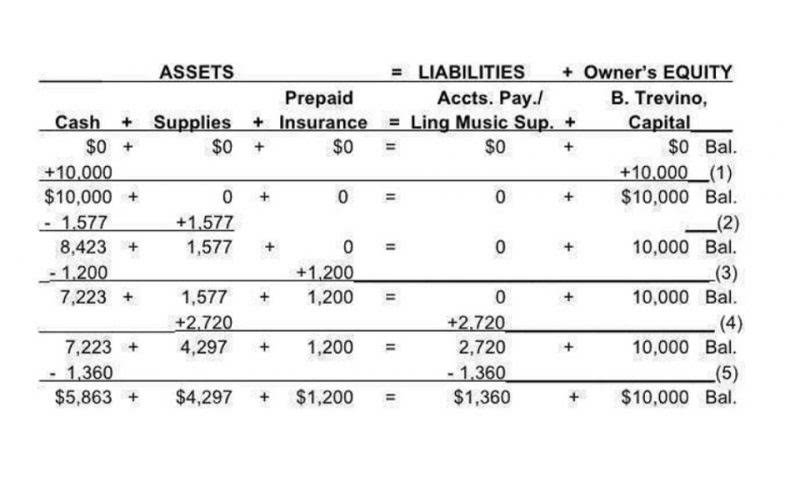
Here are brief explanations of some fundamental terms you’ll need to know to succeed. If that’s feasible for your business, the Internal Revenue Service (IRS) requires you to use this method. You can group and report transactions posted to a general ledger account with subledger types. You can also report on subledgers across accounts manufacturing accounting (for example, all accounting activity by asset ID or by work order number). The system underlines LOD 3 on balance sheet reports and LODs 3 and 4 on income statement reports. They are the lowest organizational level within your business and the level at which you account for all revenues, expenses, assets, liabilities, and equity.
This software can be used to extract data and analyse trends, improve efficiency, and make the best business decisions. The information derived from the preceding analyses can be used as the basis for the annual budget for the production area, though this work is ultimately the responsibility of the production manager, not the cost accountant. The cost accountant will likely act as an advisor to the production manager in formulating the production budget. The solution is to build a custom tech stack out of multiple smaller, cheaper, cloud-based systems that integrate to create a synchronised flow of data between each area of your business. This depends on whether the labour requirements of a particular job change as you add more volume.
Activity-based costing (ABC)
Though the concept of SDFs has been around for a while, they have yet to become a reality for a variety of reasons. Historically, one of the main challenges has been integrating frontline operations with industrial automation. In today’s rapidly evolving manufacturing environment, closed and proprietary technology systems are failing to meet the latest shop floor demands. At the same time, outdated tools are making it more challenging than ever to attract and retain skilled, increasingly tech-savvy workers. There’s an impending need to modernize workplace experiences, and for manufacturing organizations, their competitive advantage will largely depend on their software capabilities.
- This article lists the various methods of accounting and costing methods for manufacturing business owners to help you have a detailed understanding of all the concepts and principles involved.
- In summary, the accounting for manufacturing businesses is much more detailed than is required for a business that maintains no inventory.
- For example, you record an increase to an asset account as a debit and an increase to a liability account as a credit.
- Rootstock has purpose-built features for real-time inventory management for manufacturers.
- In process manufacturing, such as food and beverage or chemicals, the bill of materials is known as a production recipe.
- It can be more difficult to implement than standard or job costing, however, as a more detailed overview is required over the manufacturing process.
- You can group and report transactions posted to a general ledger account with subledger types.
Valuing your inventory will help establish the costs of goods sold and how much profit you are making. Having a shortage or excess inventory directly affects the production and profitability of your manufacturing business. When it comes to accounting, you need the right costing method to help you achieve higher profitability. With the right accounting systems in place for your manufacturing business, you’ll be able to optimize your processes. This will help you identify your most profitable product lines and customers and improve your budgeting – which will help your business to grow. As you can see, accountancy for manufacturing is about much more than just recording numbers.
Data analytics
Standard costing is very beneficial for creating and polishing budgets as it gives predefined cost estimates that can be measured against actual expenses. The chief disadvantage lies in having to routinely update the standards which can be arduous in case of constantly changing market conditions. There is much to learn and many decisions to make along the way, but it is a critical task for manufacturers. Very often, this is listed in a bill of materials, which itemises quantities and costs the materials used in your product. Make sure they understand manufacturing in general and your business in particular.
- This includes raw materials, parts, and components – and also consumables like screws and adhesives.
- Because that directly affects your tax liability, the IRS requires that you use specific methods to calculate both numbers.
- Manufacturers use this to decide whether to manufacture a product or sub-assembly, or to procure it.
- The primary objective is to provide insights into the financial performance and profitability of manufacturing activities, enabling informed decision-making and effective cost management.
- This is necessary, for example, to understand how you should be pricing your product and how to achieve or exceed your set profit margins.
Often, manufacturers invest in an all-in-one solution, which handles other tasks away from finances, such as planning and production. Ideally, data should move freely between production lines and the back office, meaning you have accurate real-time data. Product costs—not production costs—measure the total cost of producing a product, including both direct costs and indirect costs. Continuing the toothpick example, the cost of the wood, labor, equipment cleaning supplies, security guard, and electricity all add up to the total product cost used for https://www.bookstime.com/. Overall, the manufacturing accounting process is much more complex than accounting for most companies that produce no inventory. Having the right manufacturing accounting process can efficiently break down all of the operational costs within your company.
5.2 Object and Subsidiary Accounts
This will be an accumulation of the money you have spent on direct materials, direct labour costs, and manufacturing overheads on each work-in-process item in your inventory. Constraint analysis involves finding the bottleneck in the manufacturing process (if any) and advising the production department regarding the impact on throughput of changes to the flow of work through that bottleneck. The analysis can include an examination of the inventory buffer in front of the constraint and the existence of any upstream sprint capacity.
